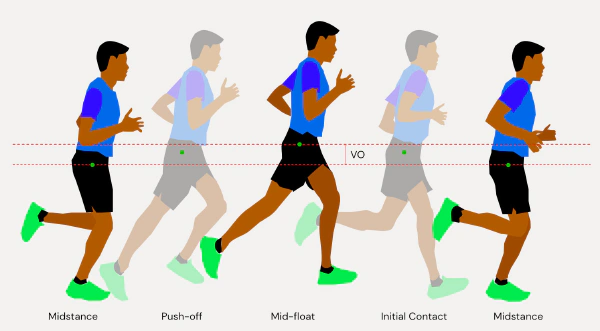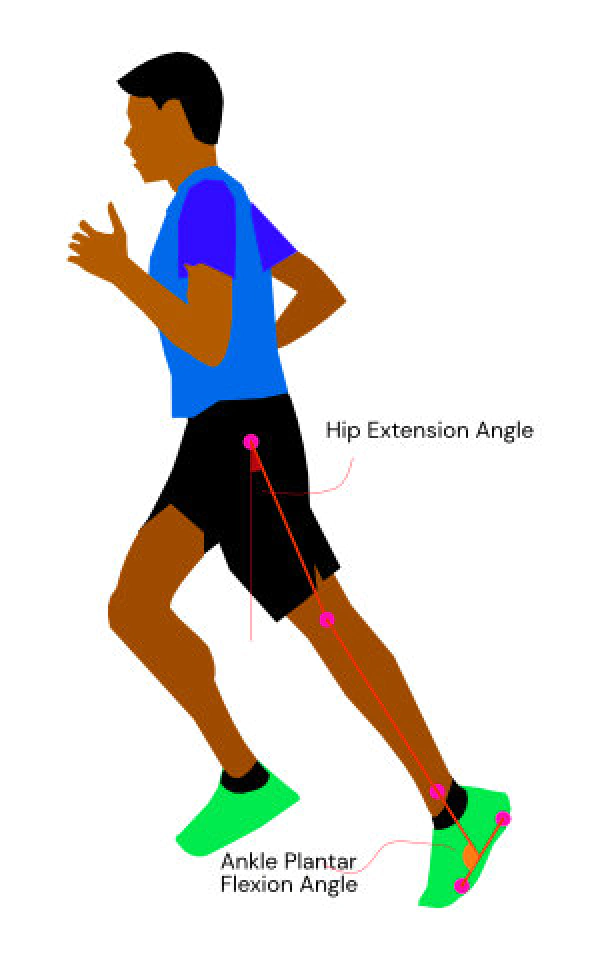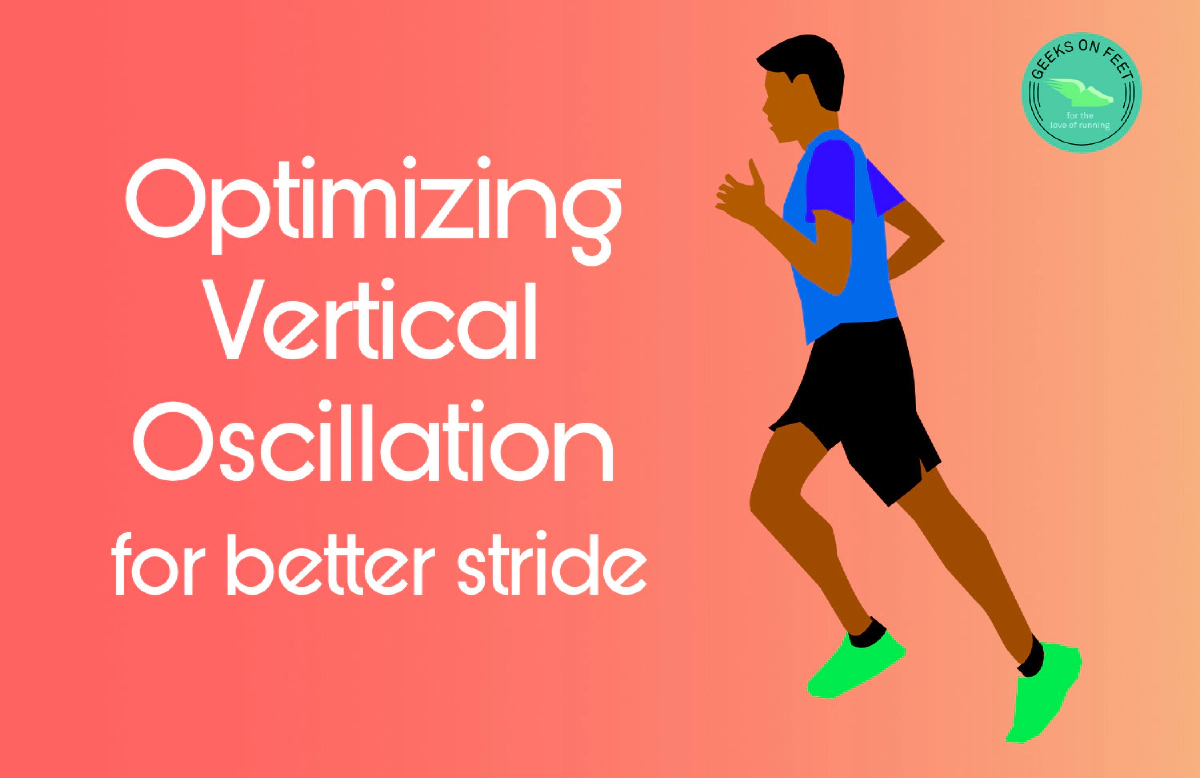Understand how vertical oscillation effects your running, and ways to optimize it
The primary goal in running is to propel body forward and move horizontally. Apart from horizontal movement, a bit of vertical movement is needed to create the necessary force required for our running Stride.
What is Vertical Oscillation (VO) / Vertical Bounce?
Vertical Oscillation (VO) also known as Vertical Bounce, is a measure of how much we move vertically during each stride when running. Vertical Oscillation is one of the key Running Dynamics metrics that reflects the efficiency of our running stride.
VO is measured in centimeters
Ideal range observed for Vertical Oscillation is 5-10cm
VO higher than 10 cm
- Too much vertical motion is inefficient as it doesn’t contribute to forward motion, and much of the energy expended to move vertically.
- Very high VO also means higher ground impact when landing, which can significantly increase the injury risk.
VO below 5 cm
- Too low a vertical oscillation is not good either. It indicates a lack of flight in stride, thereby lack of power and pace.
- Low VO often indicates more time is spent on the ground (higher Ground Contact Time - GCT) as opposed to the flight phase.
- Low VO can also mean a very short stride In either case, running performance is affected by low VO.
So keeping the VO balanced is the goal runners should strive for.

VO Visualized
Optimizing Vertical Oscillation
Causes of Higher VO
There could be several reasons for high VO.
- Insufficient forward lean - The most common reason is the lack of forward lean. When runners push-off from the ground forcefully without much forward lean, VO tends to go higher.
- Improper timing of push off - Not timing the push off, especially pushing off early often results in higher VO.
- Excessive Knee and Ankle extension - Trying too hard to generate force by excessive extension at knee and ankle, often causes high VO.

Timing push-off is key to optimizing VO
Drills and workouts to reduce VO
- If you are not leaning forward enough (less than 2 degrees) Learning further forwawrd helps betters the take-off angle, thereby reduces VO. Here are some of the mental cues and drills you can use.
- Fall to Run Drill - Start with standing in a neutral postion. Whie keeping the body tall, start leaning forward from the ankle. As you lean further forward, while you are about to fall start running. Doing this drill before the run teaches the muscle memory required to lean forward, without bending at hips.
- Improve Cadence - Lower cadence often results in runners tending to use their knee and ankle extension to drive the stride. That often results in mistimed push-off and higher vertical oscillation. Watching out and improving Cadence can be very effective to reduce VO. Check out Drills, Running workouts to improve running cadence.
- Strides - Strides are short repeats upto 20s/100m, focussing on building a better stride. By incorporating strides into your training, neuro-muscular connections adapt to optimal VO and better stride.
What causes Lower VO?
Lower VO is generally observed for runners who are beginners or take the sport later in their life.
- Lack of conditioning - Beginners often don’t have necessary conditioning to generate the force required for good vertical oscillation. Hence, they primarily rely on shuffling their legs faster, as opposed to generating force enough for good VO.
- Lack of Strength - Experienced runners with weaker glutes and lack of power in triple extension, also have lower VO.
Drills and workouts to improve VO
- Driving the knee of the swing leg (leg that is in the air) forward powerfully is an important part of propulsion. A powerful knee drive gives better flight, hence a longer stride. Strength of hip flexor muscles plays a key role in good knee drive. Better knee drive also helps to reduce the overstriding
- Wall Drills - Stand against a wall a few feet away, with your hands touching the wall at shoulder height and elbows straight. Step back and forward so that you lean forward slightly. Ensure your body is in a straight line as you lean against the wall. Once you are in the position -
- Stand on the toes on one leg, and drive the knee towards the wall on the other side.
- Hold the raised knee position for 10-20s, and then get back to the ground
- Ensure the hip is not dropping while holding this position
- Repeat it on the other side
- Plyometrics - Plyometics help build an explosive triple extension, which is key to powerful stride. Adding Plyometrics to your training will help improve your Stride. Check out Plyometric training for Runners
- Strength Training - Running Strength training will help build the necessary muscle strength for powerful hip extension and stride. Here are drills and strength workouts to improve Running Stride
Measuring VO
At Run Mechanics, we measure vertical oscillation during the swing phase. We measure it in two ways, using our video analysis software, and using 3D IMU sensors. Together these give a good understanding of what is happening in each running stride. If you have access to Garmin Rd-pod or HRM-Dual/HRM-Tri, you can observe the Vertical Oscillation of your runs yourself.
Courtesy: Team Run Mechanics. This article was first published on runmechanics.in
